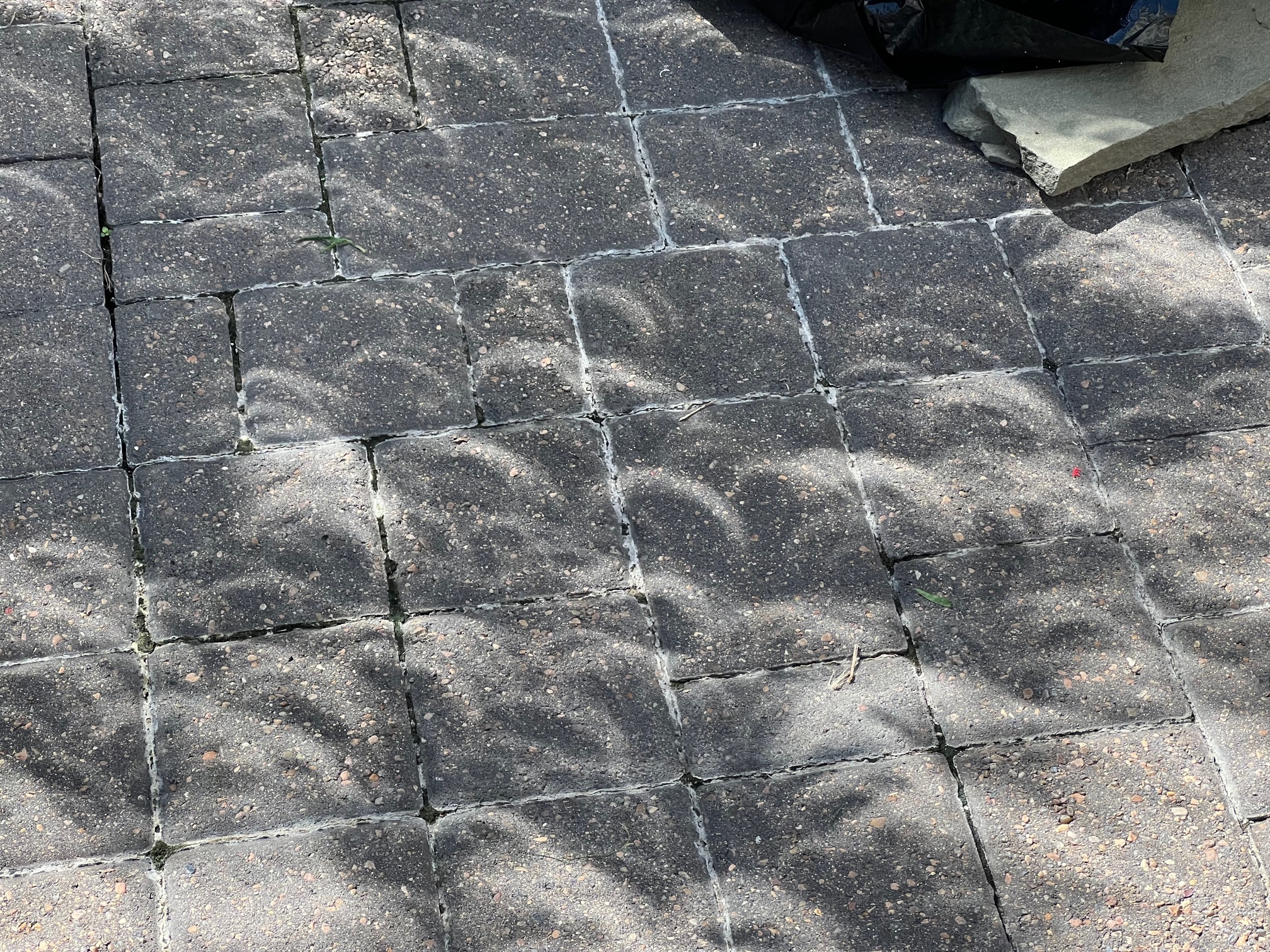Live Stream 2024/01/05 - solar eclipse discussion
Disclosure: Please be aware that some of the links on this site are affiliate links and, at no additional cost to you, I may earn a commission if you decide to make a purchase after clicking through the link. My recommendation of products or services is always based on my personal belief in the high quality and value of those products or services. See my ethics page for more details. As an Amazon Associate I earn a small commission from qualifying purchases.
This is going to be a little bit of a show and tell. I have a video coming out next week which will go into more details.
A summary of what was covered in the livestream:
- where is the Eclipse path? NASA’s eclipse map, more direct link
- solar glasses. fairly cheap.
- solar binoculars
- solar filter for DSLR lens.
- show the DSLR lens I used in 2017, 2023
- how to track the sun. can handhold if you want. tripod. Or use the solar tracker telescope. (Show photo of how I had things setup for 2017, 2023.)
- Seestar S50 would be great for partial phases. And close ups of total phase, perhaps, but I haven’t tested it.
- Keep an eye on environment things. Dimmer, cooler, shadows.
- show field of view of Seestar, DSLR lens in Stellarium
The video description has notes on all of the products I discussed.
2017 Total Eclipse
You can see the sun with Regulus, a magnitude 1.5 star, and a wider angle shot with Venus.
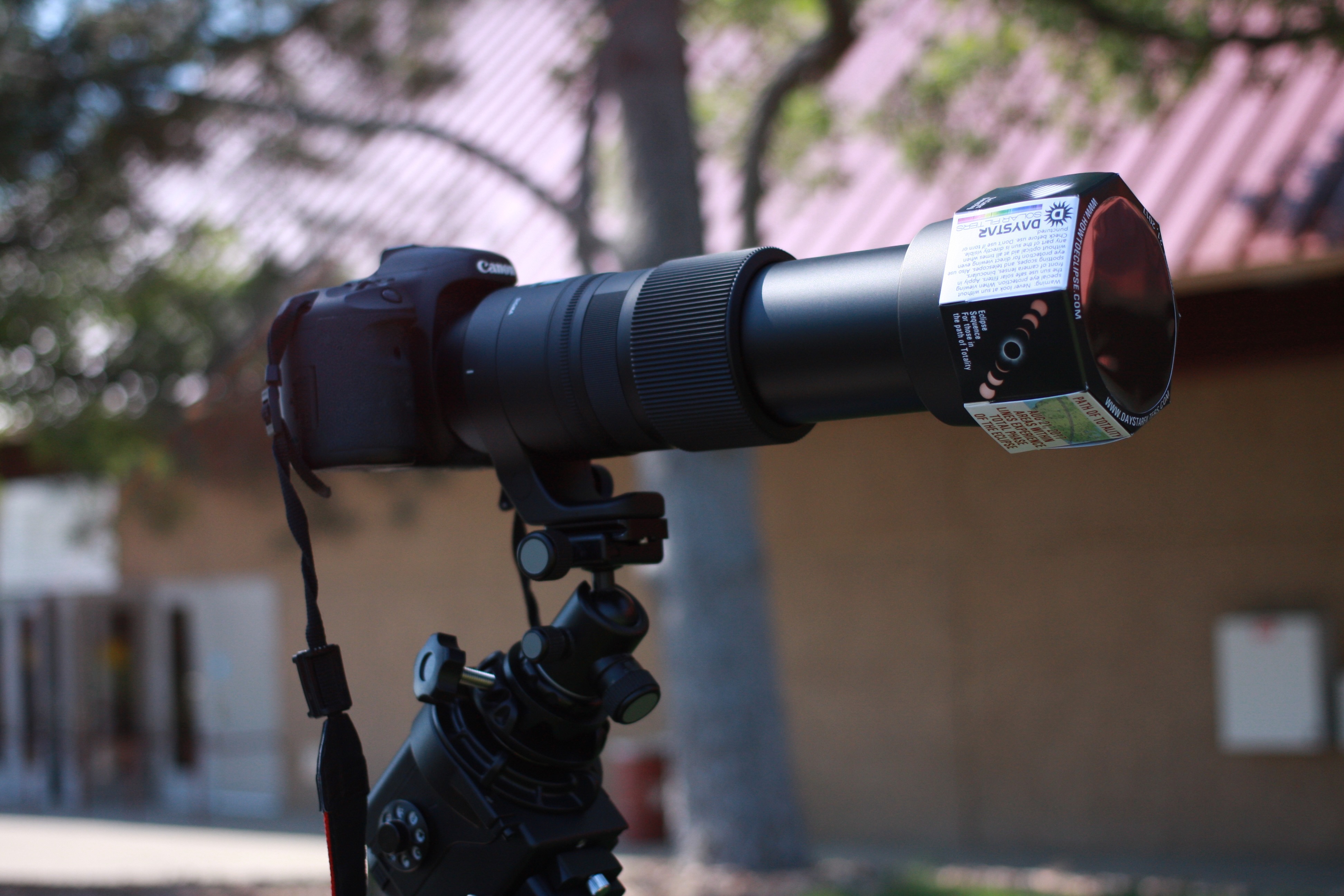
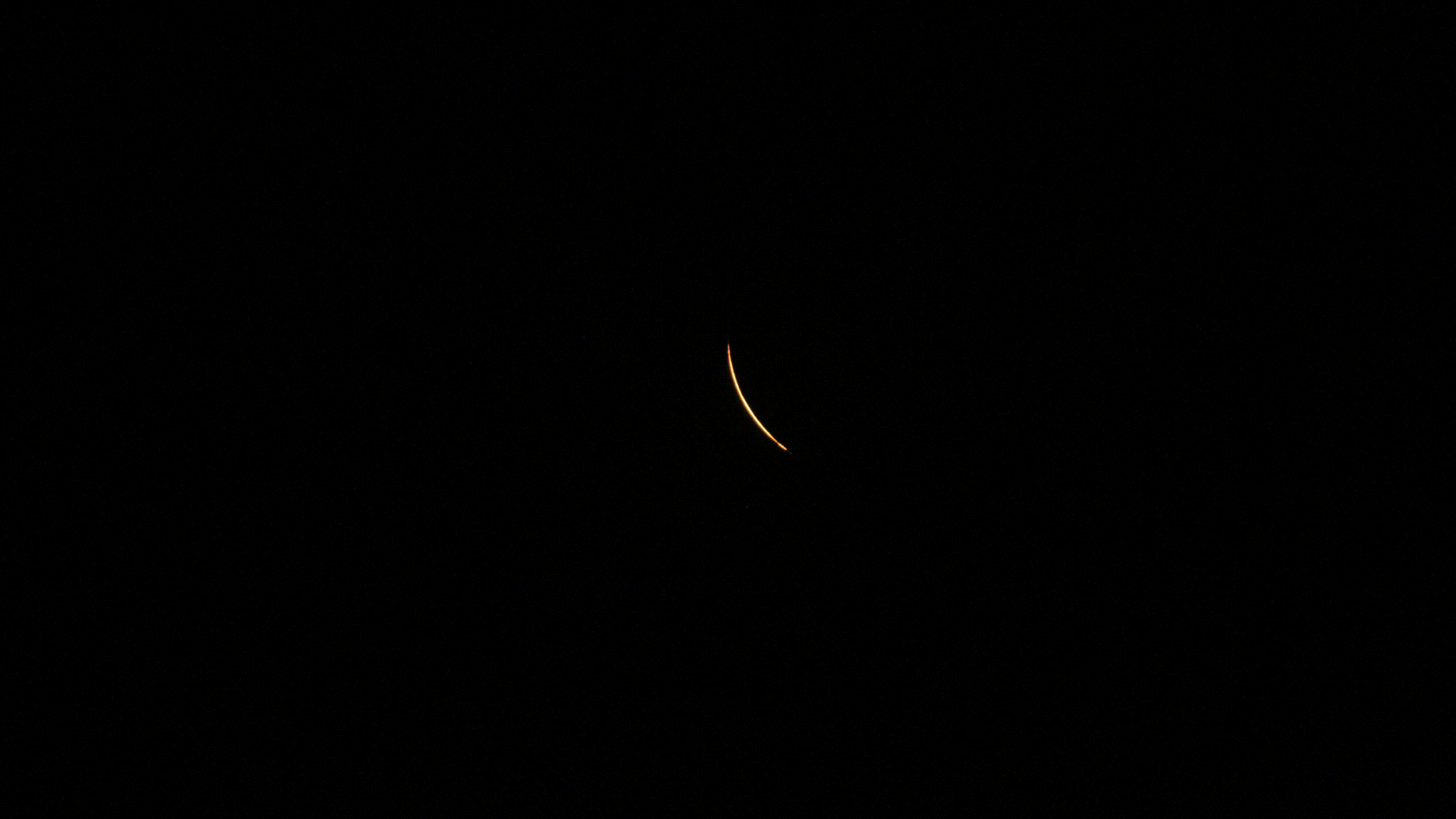
Things start moving quickly just before totality. The above sequence of 6 images was taken over 8 seconds just before totality. You can see the last slivers of sun disappearing behind the moon. It's not a continuous line because of mountains and valleys along the edge of the moon.
32 seconds after the above sequence ends, I took the below photo. Totality had begun somewhere between the two points, but I had to quickly remove the solar filter on my lens. Near the sun, towards the left side of the photo, you can see a star, Regulus. (Magnitude 1.3.) You can see long coronal streamers from the Sun's upper atmosphere extending several solar diameters. (The downside is I lost some of the final detail near the Sun.)
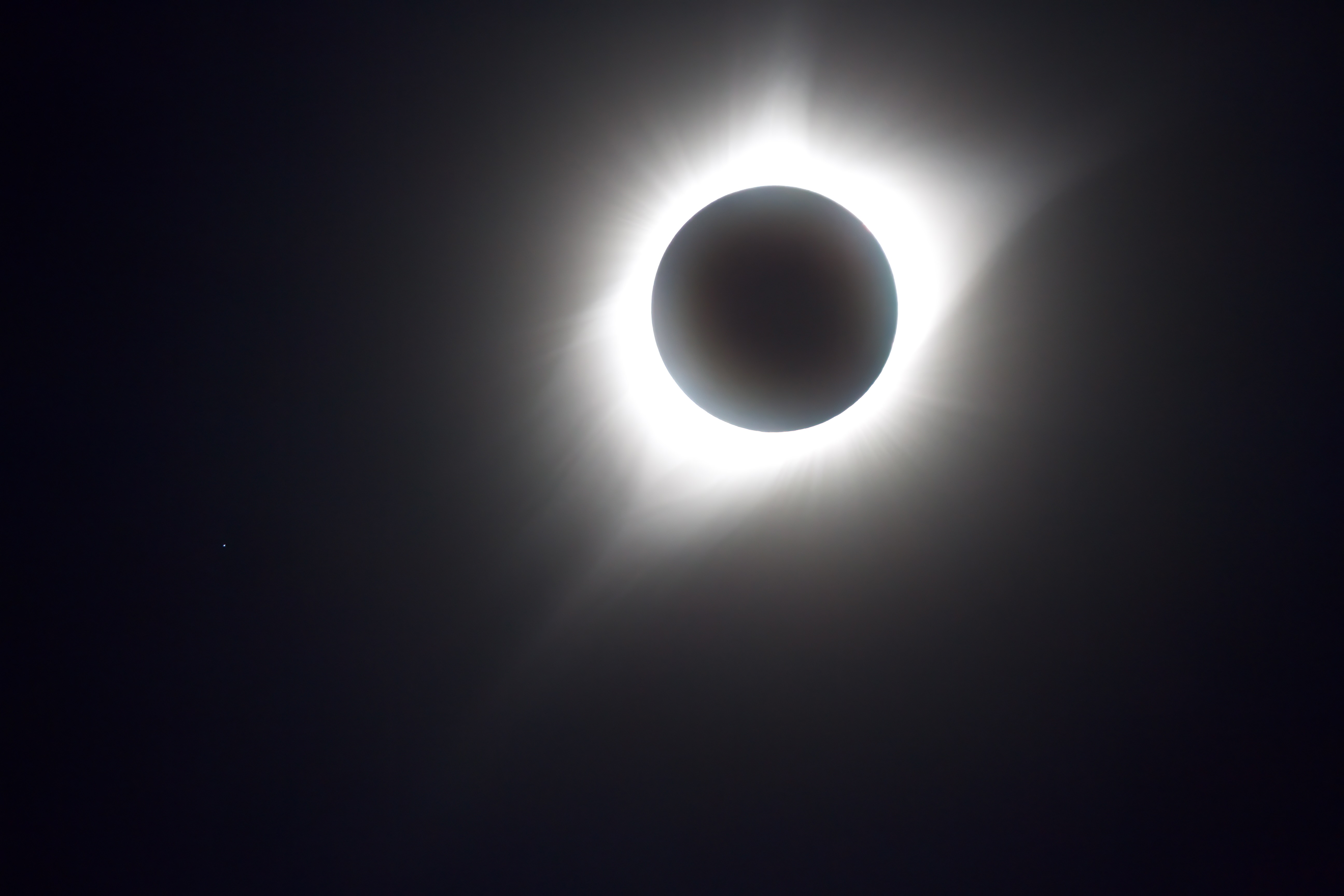
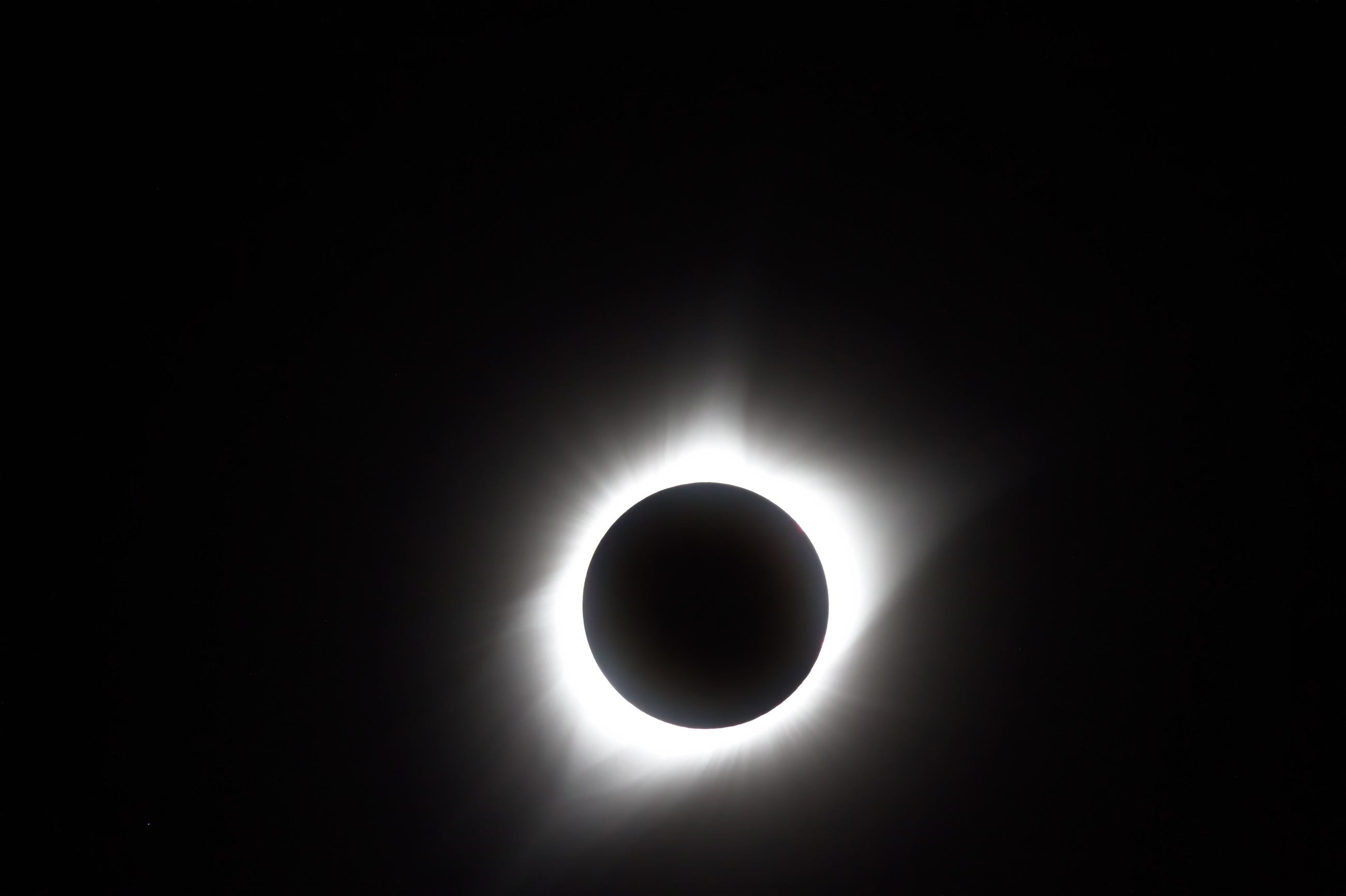
The below two photos were taken by my daughter using another DSLR and a nearly fisheye lens. In the first photo, you can see a star in the clouds to the upper right of the eclipsed Sun. That's Venus.
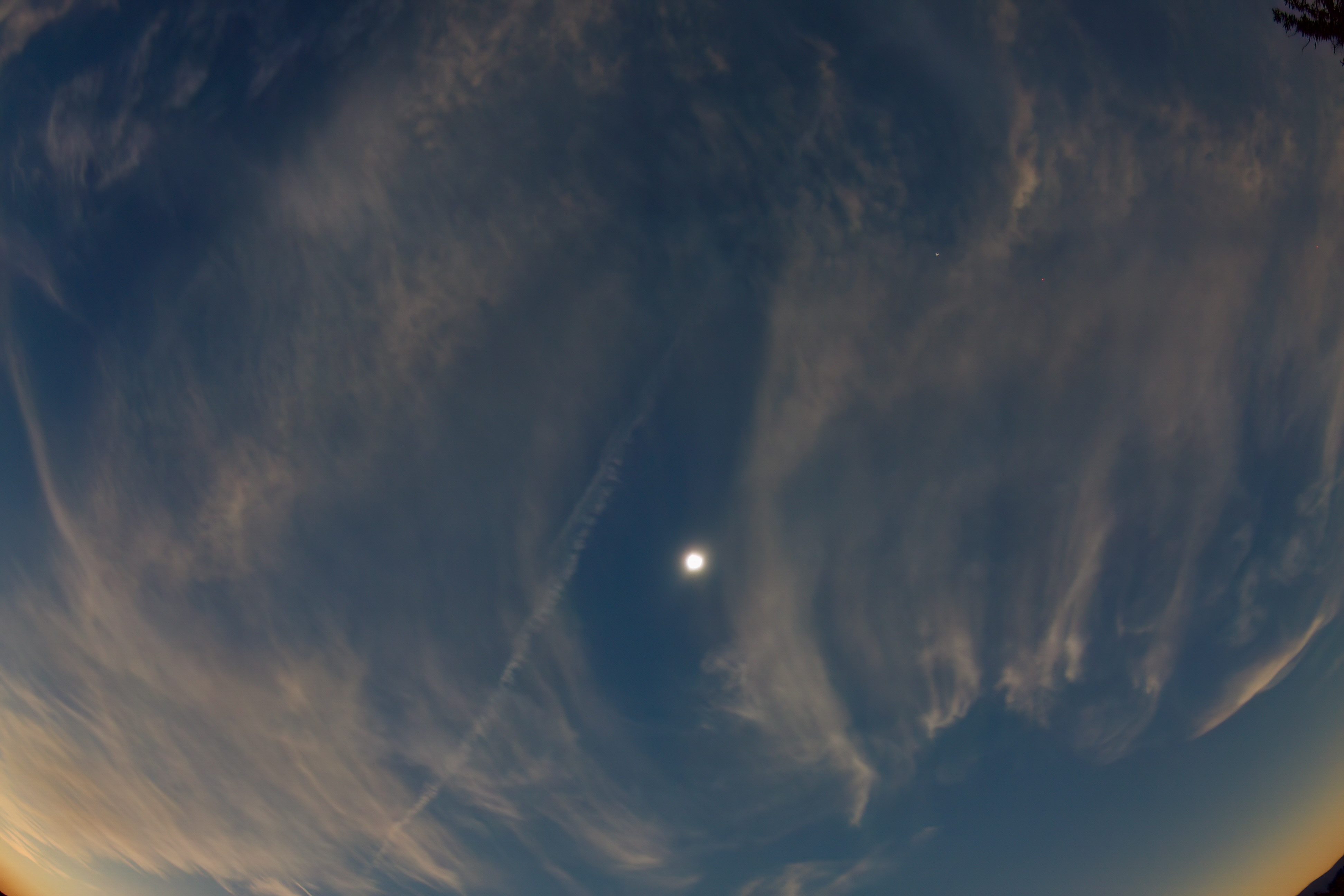
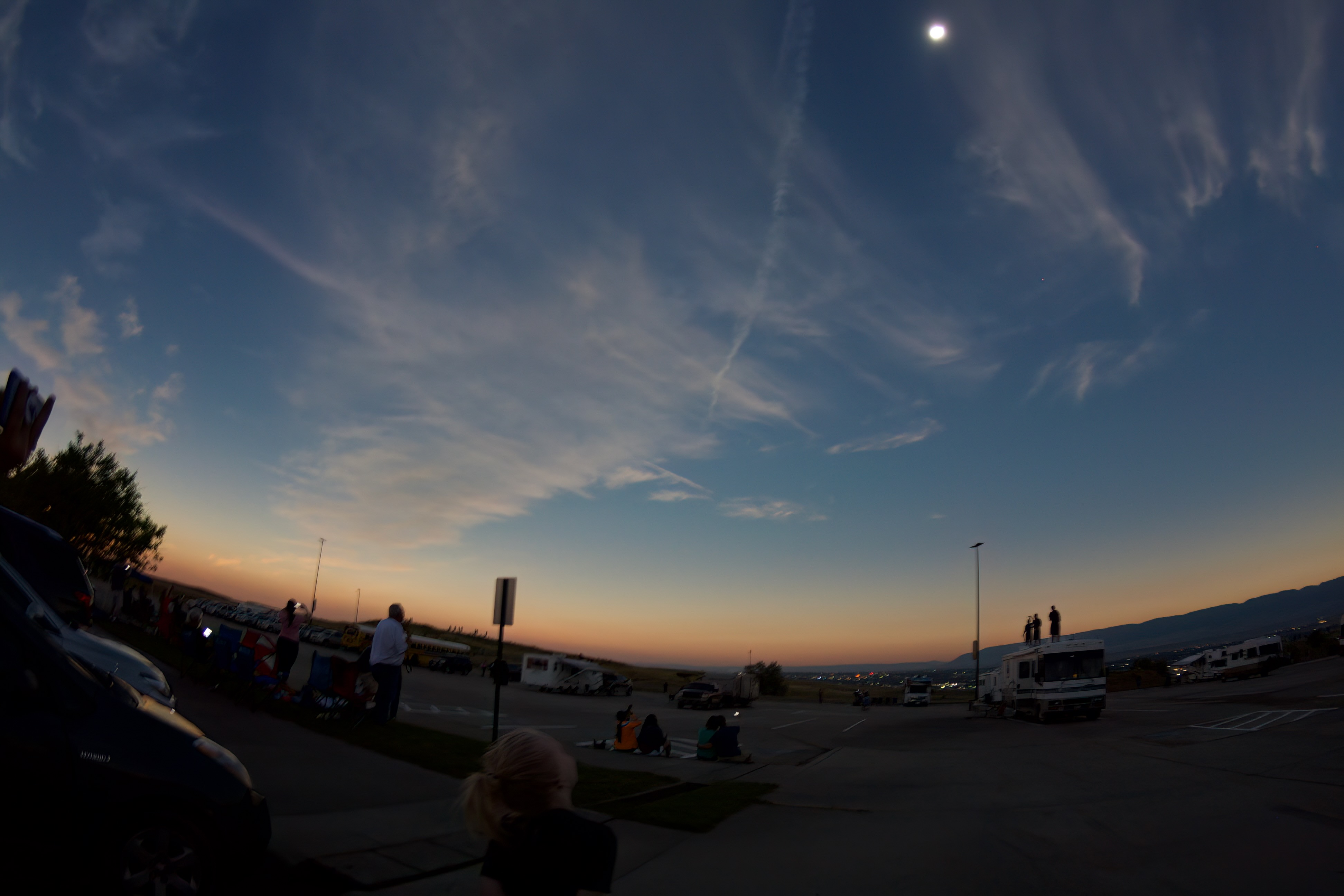
As the eclipse neared the end, and the Sun was on the verge of peaking from behind the moon, you can see some red prominences starting to appear on the right side of the Sun.
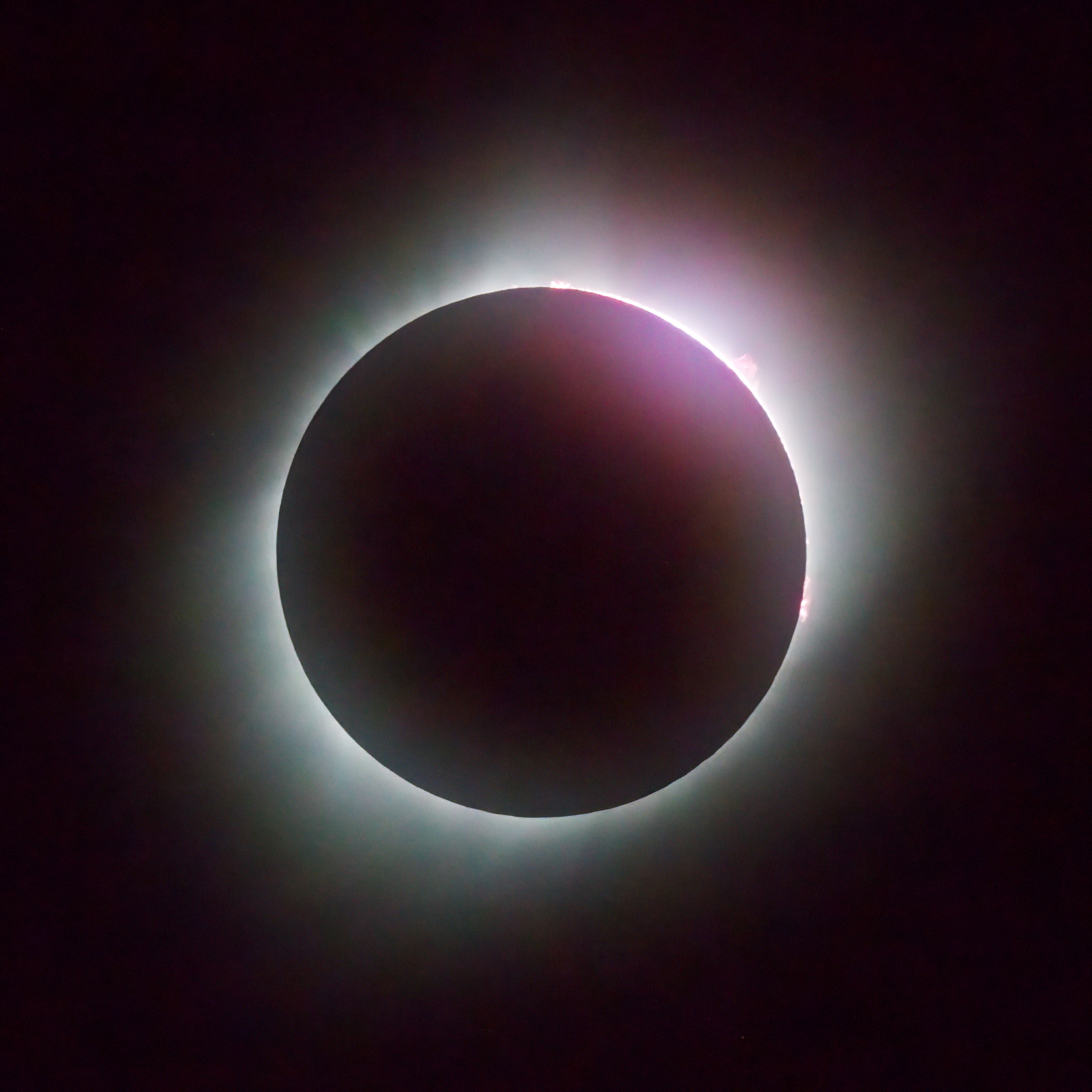
As the eclipse ends, the first bit of the Sun to come from behind the moon results in the Diamond Ring effect.
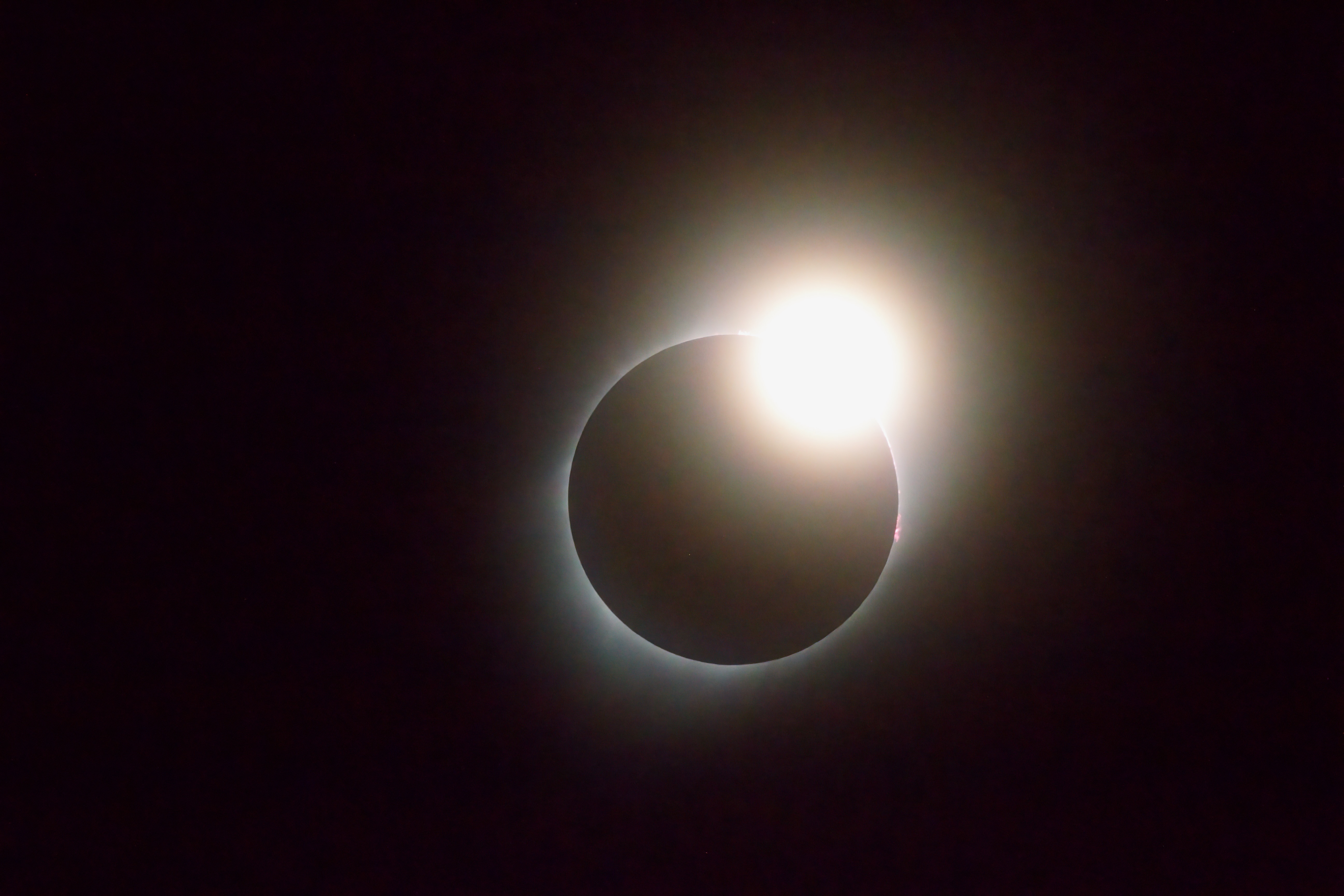
The total eclipse in 2017 only lasted about 2 minutes. The one this year will be over 4 minutes near the center line of the path, so the sky will get darker during totality.
2023 Partial Eclipse
In October 2023, an annular solar eclipse occurred, with its path crossing the United States. I stayed in Houston, where we only saw a fairly deep partial eclipse. I did use the opportunity to test out some equipment I plan on using in April.
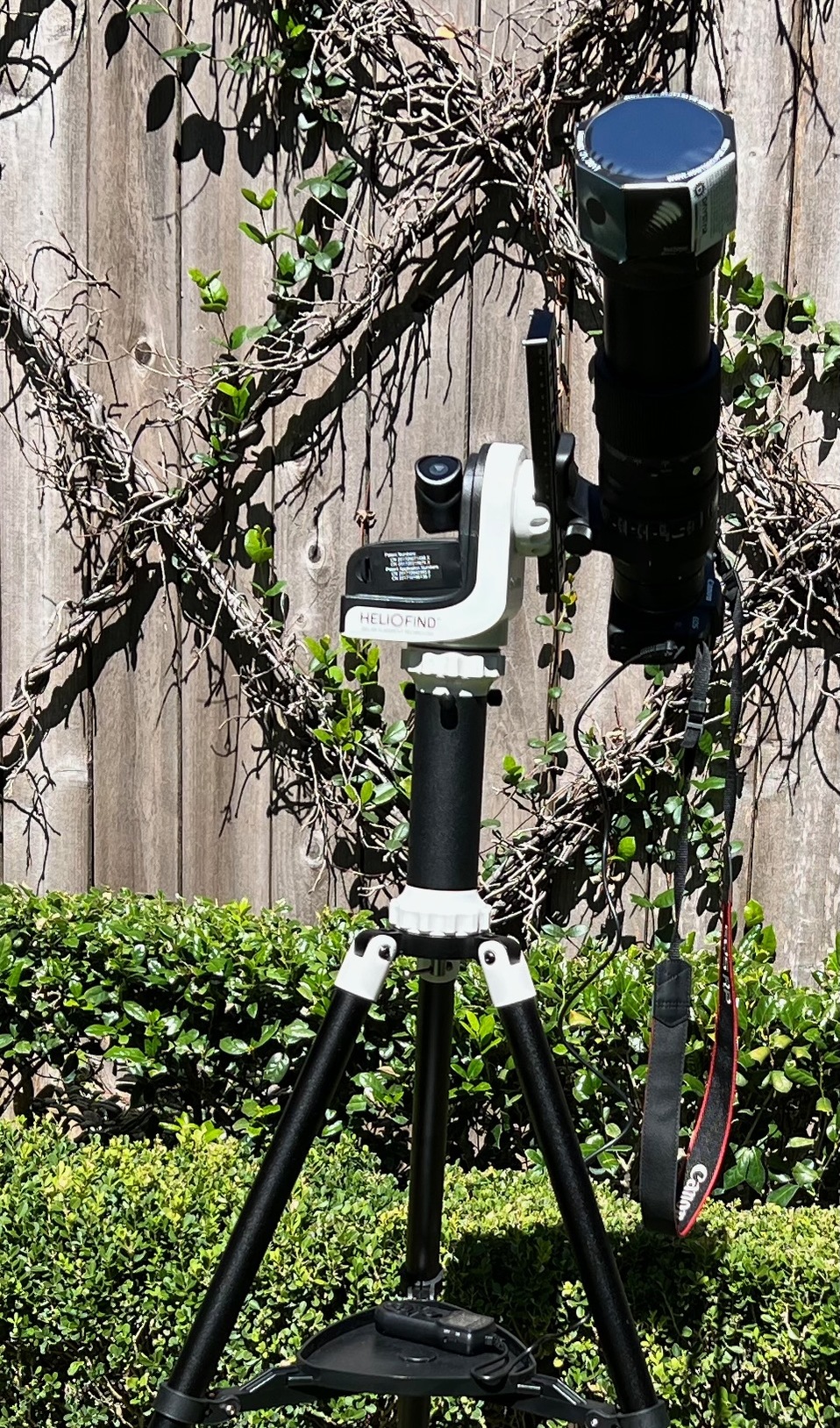
One thing I find interesting during the partial phases is to look for environmental changes. The sun gets noticeably dimmer. The temperature drops a little bit. And the round circles of light under trees and other plants turn into crescents. It turns out the round circles we normally see are (pinhole) projected images of the sun, and during an eclipse you see the crescents.
